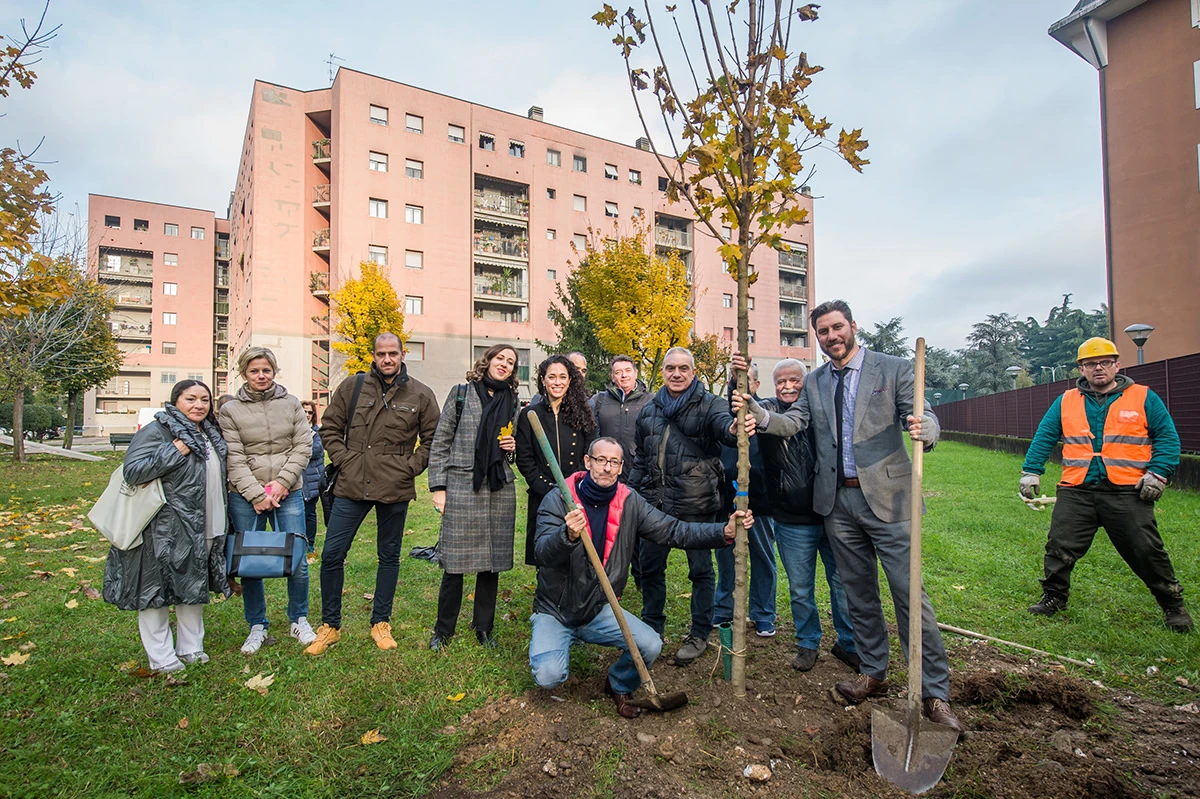Milan
Using Trees To Cool Down Milan
In the face of increasing temperatures, Bloomberg Associates is helping to green Milan and plant three million trees in the region by 2030.
The people in Milan … understand that the environment is a real problem and they can see that we are not waiting for other people to do their part. We are taking strong action.
Giuseppe Sala, Mayor of Milan
Relevant Expertise
Implement Sustainable and Resilient Solutions
- Green Space and Infrastructure Enhancement
- Heat Mitigation
Improve Public Space and Neighborhoods
- Long-Term Planning and Zoning
- Mapping and Geospatial Analysis
- Pedestrian Infrastructure Improvements
Challenge
Cities across the world are facing the challenges of rising temperatures and extreme heat, and Milan is no exception. Trees are an important element in any city’s plan to reduce urban temperatures. Other benefits that urban greenery can provide to residents include improved air quality, lowered stress levels, and better public spaces. In Milan, most of the trees are concentrated in parks and other green spaces, rather than dispersed across the city where people would feel them everyday, like on sidewalks. This results in a lack of sufficient shade in large parts of the city. The City of Milan turned to Bloomberg Associates for guidance and help with accelerating the city’s current plan to increase its tree coverage, as well as finding ways to plant trees in “grey” spaces, like sidewalks.

Approach
The City of Milan and Mayor Beppe Sala set an ambitious goal to plant three million trees by 2030 in the metropolitan region and asked for our support to make this vision a reality. Bloomberg Associates worked with the city to design a strategy to plant trees in areas with low air quality, and around urban heat islands — areas that collect and retain heat, resulting in higher-than-average temperatures.
Bloomberg Associates interviewed more than 50 city leaders and private sector partners to understand the rules and regulations for planting trees privately and publicly in Milan. Based on this discovery effort, we embarked on a review of the laws governing tree planting and focused on how to update Milan’s Master Plan (PGT), Building Code and Green Code to make it easier to plant trees for years to come.
We secured five years of satellite thermal imagery to identify the hottest parts of Milan to create a detailed heat map. Using this data, we prioritized hot parts of the city for tree planting, including streets, sidewalks, parking lots, and leftover paved spaces. Additionally, we worked with Metropolitana Milanese Casa to identify social housing sites in the hottest parts of the city for additional tree planting.
Impact
To date, more than 36,000 trees have been planted by the city across Milan. The newly green areas include several social housing sites. As a result of our work, Metropolitana Milanese Casa has dedicated €200K a year for the next three years to green and improve additional social housing developments. Additionally, long-term relationships are being fostered so that city leaders, donors and developers can work together to help fund new tree plantings in a variety of locations. Through our work, Milan is becoming an international leader in tree planting, serving as an example for cities who are pursuing equity through climate action.

Metrics
36K+ trees planted since 2018
3M trees planted in region by 2030